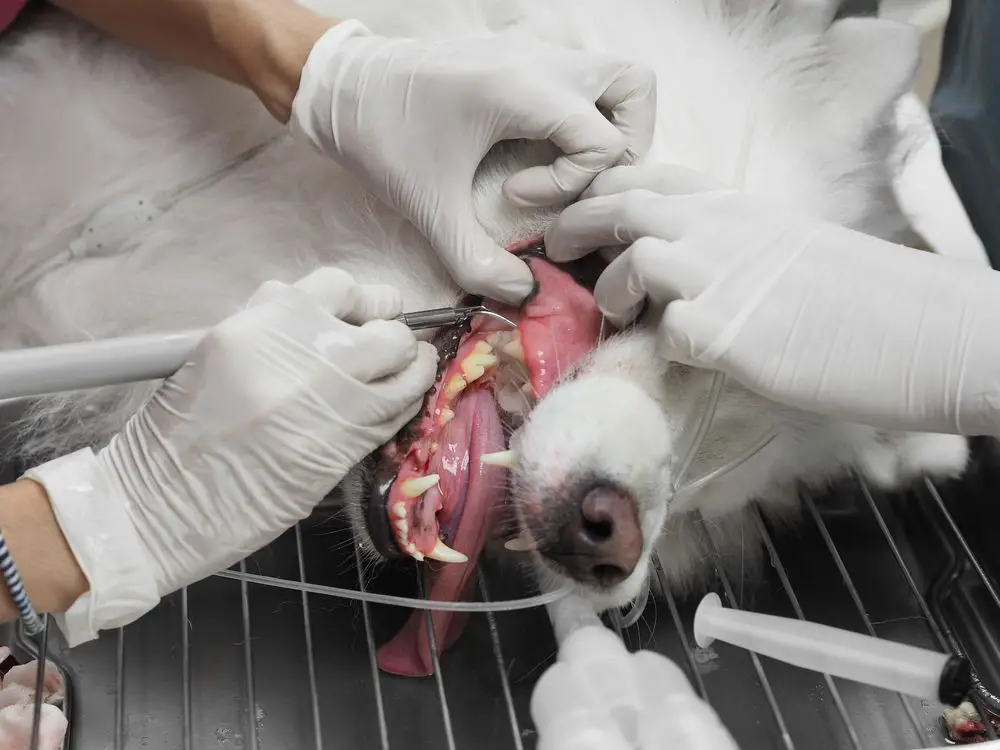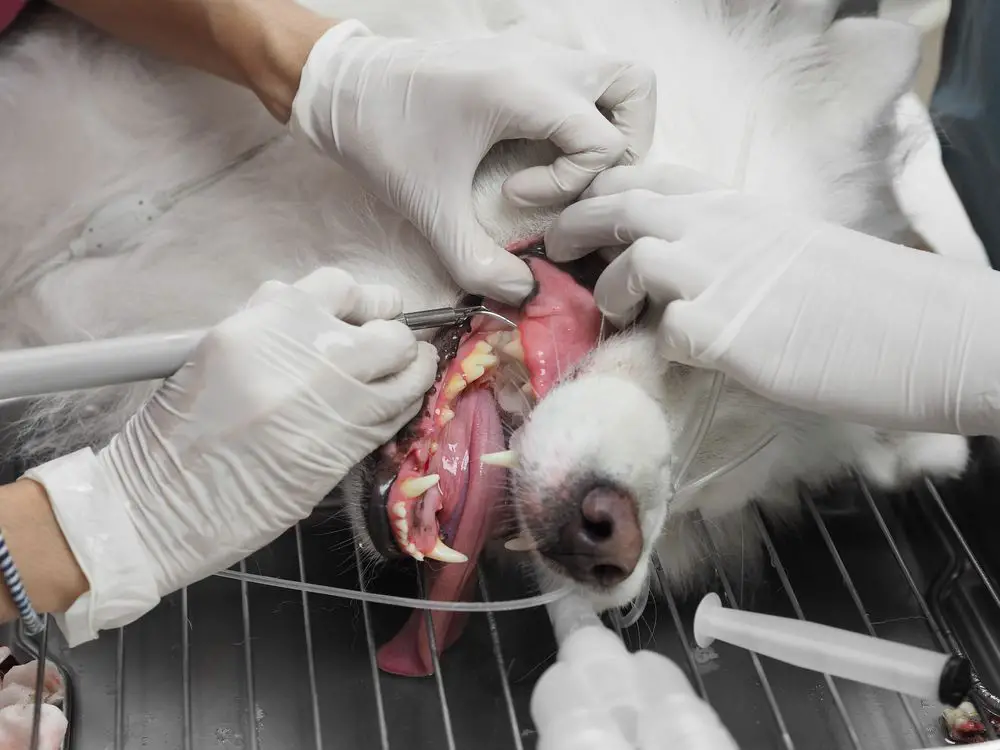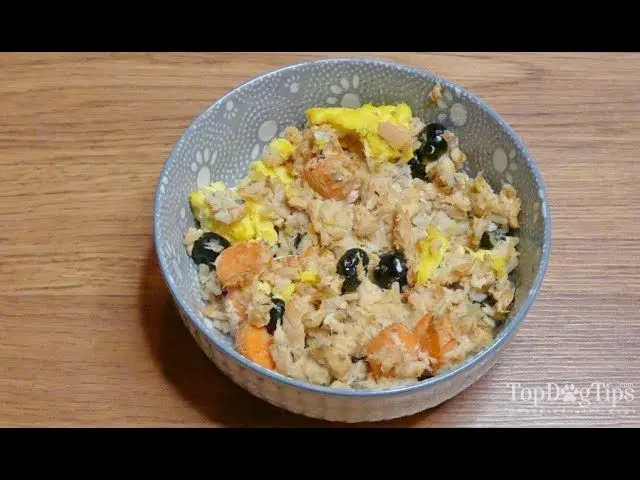Introduction
Dental surgery is a common procedure performed on dogs to address various oral health issues. Some common reasons dogs undergo dental surgery include cracked or broken teeth, periodontal disease, tooth extraction, or corrective procedures. While anesthesia and surgery can seem scary for dog owners, dental surgery is often a quick procedure with minimal recovery time. This article will focus on how dogs typically feel after dental surgery and what owners can expect during the recovery process.
Preparing for Surgery
Before undergoing dental surgery, dogs need to be thoroughly examined by their veterinarian. The vet will do a full physical exam, run bloodwork, and potentially take x-rays of the dog’s mouth. This allows the vet to identify any underlying health issues that could complicate the procedure. The bloodwork also helps establish baseline organ function levels for comparison after surgery.

For most routine dental cleanings and minor extractions, dogs are required to fast starting the night before surgery. Water may be permitted overnight in some cases, but all food is generally withheld after a certain time. Fasting helps reduce the risk of vomiting and aspiration during anesthesia. Owners need to follow the vet’s specific fasting instructions to properly prepare their dog.
Prior to surgery day, the veterinary team will advise owners on when to arrive at the clinic and go over any other preparations needed, such as withholding medications. The goal is to ensure the dog is ready for anesthesia and surgery in order to minimize risks and support a smooth procedure.
Anesthesia
Dogs are given anesthesia before dental surgery to keep them safely unconscious and pain-free throughout the procedure. There are a few different types of anesthesia that may be used:
– General anesthesia – This involves administering anesthesia through an IV catheter and fully sedating the dog. General anesthesia allows the veterinarian to fully control the dog’s vital signs and depth of anesthesia during surgery. However, it does require intensive monitoring and has risks like low blood pressure.
– Mask induction + injectable anesthesia – The dog is initially put under anesthesia with a gas mask, then given an injection of a sedative drug like Propofol to maintain anesthesia. The dog is intubated and often receives oxygen supplementation during surgery.
– Local blocks – The vet administers local anesthetic blocks around the mouth/jaw to numb the area. The dog remains lightly sedated but not fully under anesthesia. This has lower risks but may not be appropriate for all dental procedures.
The vet carefully monitors the dog’s anesthesia and vital signs throughout surgery. Their breathing, heart rate, oxygen levels, and depth of anesthesia are closely controlled to ensure the dog remains safely asleep. Risks like low blood pressure or breathing problems are managed with medications and adjustments to anesthesia. Proper anesthesia monitoring helps avoid complications and enables a smooth surgery.

The Dental Surgery Procedure
The dental surgery procedure will depend on your dog’s specific needs determined during the pre-surgical exam. Common dental procedures for dogs include:
Tooth Extractions – If your dog has severe gum disease or tooth decay/fractures, the vet may need to extract damaged teeth. They will numb the area with a local anesthetic before gently loosening the tooth with dental elevators and extracting it. The vet will then clean and flush the socket to remove debris.
Dental Cleaning – Tartar and plaque removal is crucial for your dog’s oral health. The vet will scale and polish each tooth above and below the gumline using ultrasonic scalers and hand instruments. This removes buildup and smooths the tooth surface.
Periodontal Surgery– This deep cleaning below the gumline is needed if your dog has advanced gum disease. The vet will numb the area then make small incisions to access the roots for thorough cleaning and disinfection.
Growth Removal – Benign masses in the mouth are common in dogs. The vet will numb the area then use scalpels or lasers to remove growths or swollen gum tissue.
Your vet will closely monitor your dog throughout the procedure and his recovery afterwards. They will provide post-op home care instructions tailored to your dog’s specific surgery.
Recovery
After the dental surgery is complete, your dog will begin to wake up from the anesthesia. This process is carefully monitored by the veterinary team to ensure your dog has a smooth and safe recovery.

Your dog will likely still be quite groggy and disoriented immediately after surgery. The veterinary staff will monitor your dog’s vital signs like heart rate, respiration, and temperature. They will also check your dog’s reflexes and monitor their general alertness as the anesthesia wears off.
Your dog may be given intravenous fluids during the recovery period to help flush the anesthetic drugs from their system. Oxygen therapy may also be used if needed to help your dog breathe easier.
Once your dog is alert enough, the vet will clear their airway and make sure they can swallow safely before offering them a small amount of water. This is an important step to avoid aspiration pneumonia.
The veterinary team will continue monitoring your dog closely until the anesthesia has worn off and your dog is able to sit, stand, and walk on their own. At that point, the vet will likely discuss aftercare instructions with you before discharge.
Going Home
After dental surgery, your dog will likely need to spend the night at the veterinarian’s office for continued monitoring and care. However, once the vet determines your dog is stable enough, it will be time to bring him home.
Before you take your dog home, the vet will go over all the discharge instructions with you. This is crucial information for caring for your pup during recovery. Here are some things the vet will review:
- Medications – Your dog will need prescription medications for pain management and to prevent infection. The vet will explain dosage, frequency, administration, and side effects.
- Incision care – If your dog had any extractions, he will have an incision site that needs monitoring and cleaning. The vet will demonstrate proper cleaning techniques.
- Exercise restrictions – Your dog will need to be kept quiet during initial recovery. The vet will advise how long to restrict activity and when your dog can resume normal exercise.
- Dietary guidelines – The vet may recommend soft foods and avoiding hard toys or treats that could damage healing tissues.
- Recovery timeline – The vet will give you an idea of what to expect during recovery and when to schedule a follow-up appointment.
Following the vet’s post-op instructions closely will give your dog the best chance at smoothly recovering from dental surgery.
Pain and Discomfort
Dogs will likely experience some degree of pain and discomfort in the hours and days following dental surgery. The level of pain will depend on the extent of the procedure, with more invasive surgeries typically causing more pain. Common signs of pain include whining, restlessness, changes in appetite, reluctance to play or go on walks, and sensitivity around the mouth.
Most dogs will experience mild to moderate pain for the first 12-24 hours after surgery. This is typically well-managed with prescription pain medication. It’s important to give all medication as directed to keep your dog comfortable. Some mild discomfort may persist for several days as the surgical sites heal. Your vet can prescribe additional pain relievers if needed.
You may notice your dog hesitating to eat or drink immediately after surgery. This is normal as the mouth may be tender. Allow your dog to eat and drink at their own pace. Softer foods can make eating more comfortable at first. Icing water can also help soothe irritation.
Make sure to monitor your dog closely for signs of pain and alert your vet if pain seems severe or uncontrolled. Most dogs should steadily improve each day following dental surgery as healing progresses. If significant pain persists beyond the first few days, contact your vet for guidance. With proper recovery care, your dog’s mouth should return to normal comfort levels within a week or so.
Eating and Drinking
After dental surgery, your dog may experience a decreased appetite and not want to eat or drink much initially. This is normal as the anesthesia and medication can cause nausea, and the mouth is tender from the procedure. However, it’s important to encourage eating and drinking to prevent dehydration.

Offer small, frequent meals of soft, moist foods like canned dog food or homemade blends. Avoid dry kibble or treats that may irritate surgical sites. Stick to a bland diet without any spicy seasonings. You can add warm water or low-sodium broth to kibble to soften it up. Hand feed your dog tidbits of food to stimulate their appetite if needed.
Preventing dehydration is crucial. Always provide fresh water and consider adding low-sodium chicken or vegetable broth to encourage drinking. Offer ice cubes or frozen treats to help soothe the mouth. You can also syringe feed water or unflavored Pedialyte if your dog is refusing to drink.
Check with your vet on diet recommendations specifically for your dog’s procedure and recovery. Soft foods high in protein and calories may help aid the healing process. Avoid hard chews, bones, and toys that could damage surgical sites while they mend.
Activity Restrictions
After dental surgery, dogs will likely have some activity restrictions while they recover. The exact restrictions and timeline will depend on the specific procedure, but most dogs will need to take it easy for at least 7-10 days after surgery.
During the initial recovery period, dogs should be kept quiet, calm and confined to a small space like a crate or small room. Playing, running, jumping, climbing stairs, and other strenuous activities should be avoided to prevent the surgical site from becoming irritated or stitches from tearing. However, short, leashed walks for bathroom breaks are usually allowed.
As the dog continues to heal over the next 1-2 weeks, longer walks may be permitted, but strenuous play with other pets or children should still be avoided. High-impact activities like fetching balls or frisbees, tug of war games and dog parks are not recommended for 2-4 weeks post-surgery depending on the specific operation.
Follow your veterinarian’s instructions for gradually increasing your dog’s exercise over the recovery period. Providing interactive toys, chews and food puzzles can help stimulate your dog mentally while they cannot exercise physically. With rest and restricted activity, your dog can make a full recovery after dental surgery.
Conclusion
In summary, dental surgery is an important procedure for maintaining your dog’s oral health and preventing more serious health issues. While recovery may involve some pain, discomfort, and activity restrictions, these are temporary and owning a dog requires being responsible for their healthcare needs. With proper post-surgery care and monitoring, your dog can bounce back to their happy, energetic selves.
Regular dental cleanings and addressing any dental disease early is crucial for your dog’s wellbeing. Poor dental health is extremely common in dogs and can lead to infections, tooth loss, bone damage, and kidney, liver and heart disease. As a dog owner, you play an important role in prioritizing your dog’s dental care. Following all aftercare instructions from your veterinarian and adhering to activity restrictions will ensure your dog recovers smoothly after their dental procedure.
Though dental cleanings and surgery may cause short-term stress, they are immensely beneficial for dogs in the long run. Your dog relies on you to make the best healthcare decisions for them. With a proactive approach to dental health, your dog can enjoy many more years of chewing, playing, and living life to the fullest alongside you.